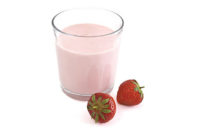

I admire the entrepreneurial effort of the cultivator whose vision must be that consumers will want to grow their own all-natural, high-intensity sweetener. But let’s face it, stevia leaves need some modern day extraction and refining to go from plant to table-top sweetener. Nevertheless, the availability of the plants will most likely reinforce the “naturalness” of stevia-derived rebaudioside A, commonly known as reb-A, among consumers. You cannot grow any other high-intensity sweetener in a planter or home garden…yet.

A booming ingredient category
U.S. demand for alternative sweeteners is projected to grow 3.9% annually through 2014, as food processors and consumers seek healthier food options with fewer calories or less high-fructose corn syrup, according to a report from The Freedonia Group Inc., Cleveland, Ohio. Specifically, the report states that sucralose, acesulfame potassium, erythritol and reb-A will see above average gains.Advances will be driven by increasing consumer interest in nutritionally enriched products and all-natural foods, which promotes demand for high-value premium and natural additives. As consumers are wary of foods with artificial-sounding ingredients, processors seeking to create “clean” ingredient labels are increasingly favoring natural alternative sweeteners such as erythritol and reb-A. However, among alternative sweeteners, aspartame will continue to account for the largest share of demand, due primarily to its widespread use in the diet carbonated soft drink segment.
The U.S. Market for Alternative Sweeteners, 2004-2014 (in millions of dollars)
2004 2009 % Change 2014 (forecast) % Change
$730 $950 5.4% $1,150 3.9%
Source: The Freedonia Group
Further, expect to see a number of other ingredients being promoted as alternative sweeteners. These are not necessarily no-/low-calorie sweeteners, but rather natural sweeteners that may provide other functionalities.
For example, isomaltulose is a disaccharide produced from beet sugar. It is a fully digestible carbohydrate that is digested much more slowly than other sugars. Energy levels are sustained for longer periods of time since it is slowly metabolized by enzymes in the gut and gradually supplies energy to the body and the brain in the form of glucose, thus enhancing both physical and mental performance. In addition, isomaltulose is low glycemic and kind to teeth. It can replace sucrose on a one-to-one ratio, while providing a milder but natural sweetness (approximately 60%). Isomaltulose works well with all other sweetening ingredients, and since it is resistant to microbial fermentation, it may be applied in yogurt and fermented dairy beverages.
Another is agave nectar, which comes in a number of varieties - including amber, clear and raw - making it a suitable sweetener for an array of applications. It is a low-glycemic natural sweetener that is 1.4 times as sweet as sucrose. It will not crystallize and dissolves in both hot and cold applications.
While agave nectar, which comes from the same plant that produces tequila, has been available in the marketplace for several years, as a sweetener, it has only recently gained attention. In fact, agave nectar was named one of the Top Food Trends for 2009 by Reuters for its popular usage as an alternative to sugars, artificial sweeteners and high-fructose corn syrups.
“The marketplace for natural sweeteners is about to experience an entirely new level of quality, color and taste with the introduction of these amazing agave nectars,” says Stew Duncan, co-founder of Nature’s Agave Inc., Encinitas, Calif. “We believe that everyone from culinary experts to health-conscious consumers should be able to enjoy a sweet, delicious and superior alternative to sugar.”
At the beginning of the year, New Zealand’s BioVittoria, the world’s largest producer and processor of monk fruit (luo han guo), received official notification from FDA that their monk fruit concentrate is generally recognized as safe (GRAS) as a sweetener and flavor enhancer. It is the first and, to date, only all-natural, zero-calorie fruit concentrate sweetener to be GRAS notified by FDA. The unique zero-calorie sweetness of monk fruit concentrate comes from naturally occurring compounds in the fruit that are up to 300 times sweeter than sugar.
“Monk fruit has been a traditional food in South East Asia for hundreds of years, but the existing technology for cultivating and processing the fruit could not provide the volume, product consistency and taste quality needed in a natural sweetener for the food and beverage industry,” says BioVittoria’s CEO David Thorrold. “BioVittoria has transformed the monk fruit industry through advances in plant varieties, seedling cultivation, growing methods and fruit processing, creating the world’s only vertically integrated monk fruit supply chain.” Thorrold says the FDA no objections letter is the final step in bringing monk fruit into the mainstream. “This final piece of regulatory compliance is what the large food and beverage companies have been waiting for,” he says.
Paul Paslaski, BioVittoria’s Vice President of Sales & Marketing says that the fruit source is a unique point of difference which consumers will value. “Our consumer research in the U.S. shows moms and their families want natural, healthy choices for everyday food and beverage items like cereals, juice drinks and yogurts. The same research shows that moms trust fruit for healthy nutrition.”
Thorrold explains that consumers don’t want compromises, and that existing natural sweeteners are struggling to deliver the complete package of reduced sugar with great taste. “We have conducted extensive sensory profiling which shows [our monk fruit ingredient] possesses a clean taste profile without the off notes found in some natural sweeteners. This testing has also shown cost and taste benefits for blending [it] with other natural sweeteners such as reb-A.”
I wonder if next spring monk fruit plants will be available at Home Depot.
